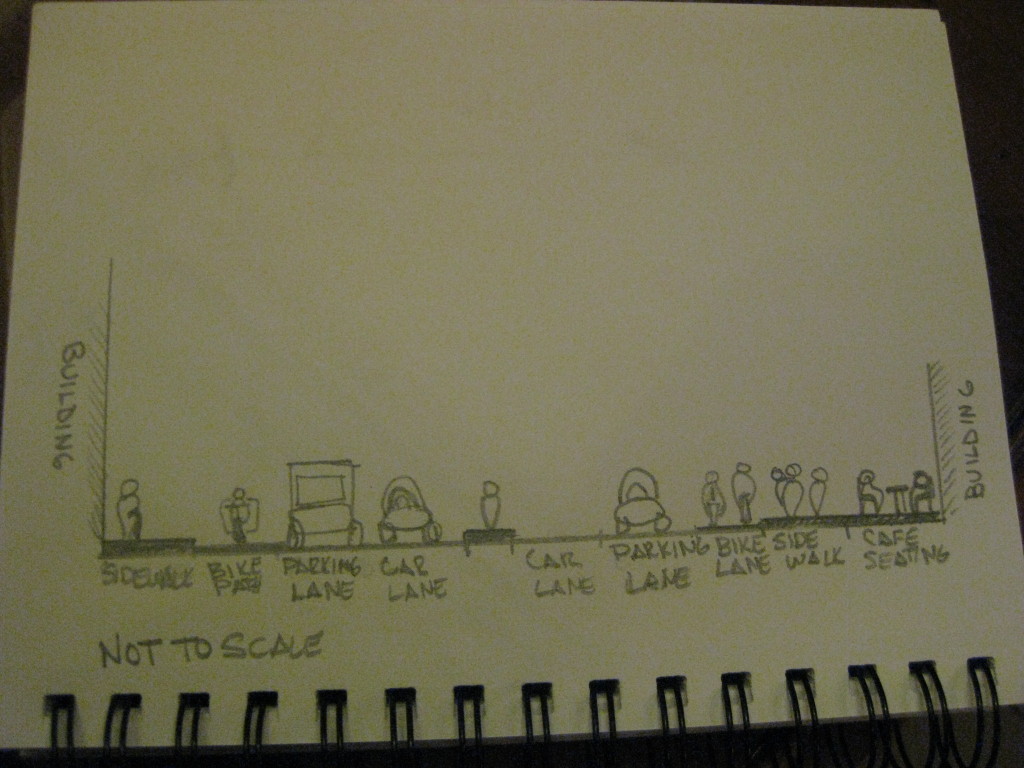The class has a blog up and running here! Pairs of students will post an entry just about every day. My classmate Jessie and I uploaded a post earlier tonight so I am going to cross-post it here.
—
During our time in Copenhagen, urban designers Regitze Hess and Jeff Risom presented lectures to the class. Hess works for the Center for Public Space Research, a non-profit that provides grants to projects in Denmark that are innovating urban design. Risom works for Jan Gehl Architects, a firm that designs public spaces around the world by following the principles from Ghel’s books Life Between the Buildings and Cities for People. Both lecturers stressed the principle of designing cities to be livable, sustainable and resilient, which was championed by Ghel in his books. Livability is how effective a place is here and now. Sustainability is the success of a place in the long-term and widespread sense. Resilience refers how well the city adapts during time between the present and future. In other words, one needs to design cities for extremes and build capacity for rapid change.
Hess refers to these three ideas in simple terms:
Livability = comfort capacity
Sustainability = carrying capacity
Resilience = coping capacity
After hearing both lectures and exploring the inner city of Copenhagen, we noticed ways in which the city incorporates these principles into their urban design.
Livability
We would consider Copenhagen’s city center to be a very livable area, which is reflected in its bustling downtown area.
- Public spaces contain shops, exhibits, and entertainment, making the space between the buildings inviting and inhabited.
- Many of the streets are ‘complete streets’, meaning they are designed with equal access for pedestrians, cyclists, cars, and buses. Each mode of transit has its own distinct space that provides a safe area and sense of security.
- Residents make use of public spaces and seem to take pleasure in the design of their city.
Sustainability
Sustainability is at the forefront of the city’s agenda thus many elements of sustainability are incorporated throughout the city.
- A majority of Copenhagen’s energy comes from renewable sources. Numerous wind turbines are visible from the city center. Waste incineration plants are used to convert the city’s trash into heat for district heating and electricity generation.
- The city focuses on getting people out of their cars. This effort has resulted in an extensive public transit system and cycling infrastructure. Since 1947, the city has been organized using a five finger system to condense development along transit lines. 35% of inhabitants get to work or school by bicycle because it is faster and easier than traveling by car.
- Inner-city Copenhagen is high density with 60-80 building units per acre compared to 6-8 building units per acre that is characteristic of a city like Davis, CA. Many old industrial buildings have been reused to create architecturally interesting high density mixed-use and residential areas.
Resilience
Both the infrastructure and residents of Copenhagen cope with constant construction taking place throughout the city. However, unanticipated events have the potential to overwhelm the city.
- The city works hard to ensure construction does not impact the day-to-day routines of residents. Bike paths and pedestrian walkways are rerouted around construction using signs and temporary ramps.
- Buildings constructed in the city are designed with high quality materials and require little maintenance.
- One week before we arrived in Copenhagen, a cloud-burst dropped 6 inches of water in one hour on the city. The 100-year storm event inundated the city’s sewer system, flooding the city and cutting electricity and hot water delivery to tens of thousands of residents for days. This shows a lack of planning for infrequent disasters.
Copenhagen is a great example of designing a city to be livable, sustainable, and resilient. The United States could realistically follow Copenhagen’s example by creating more complete streets, expanding renewable energy sources, and ensuring construction makes accommodations to maintain residents’ day-to-day routines.

